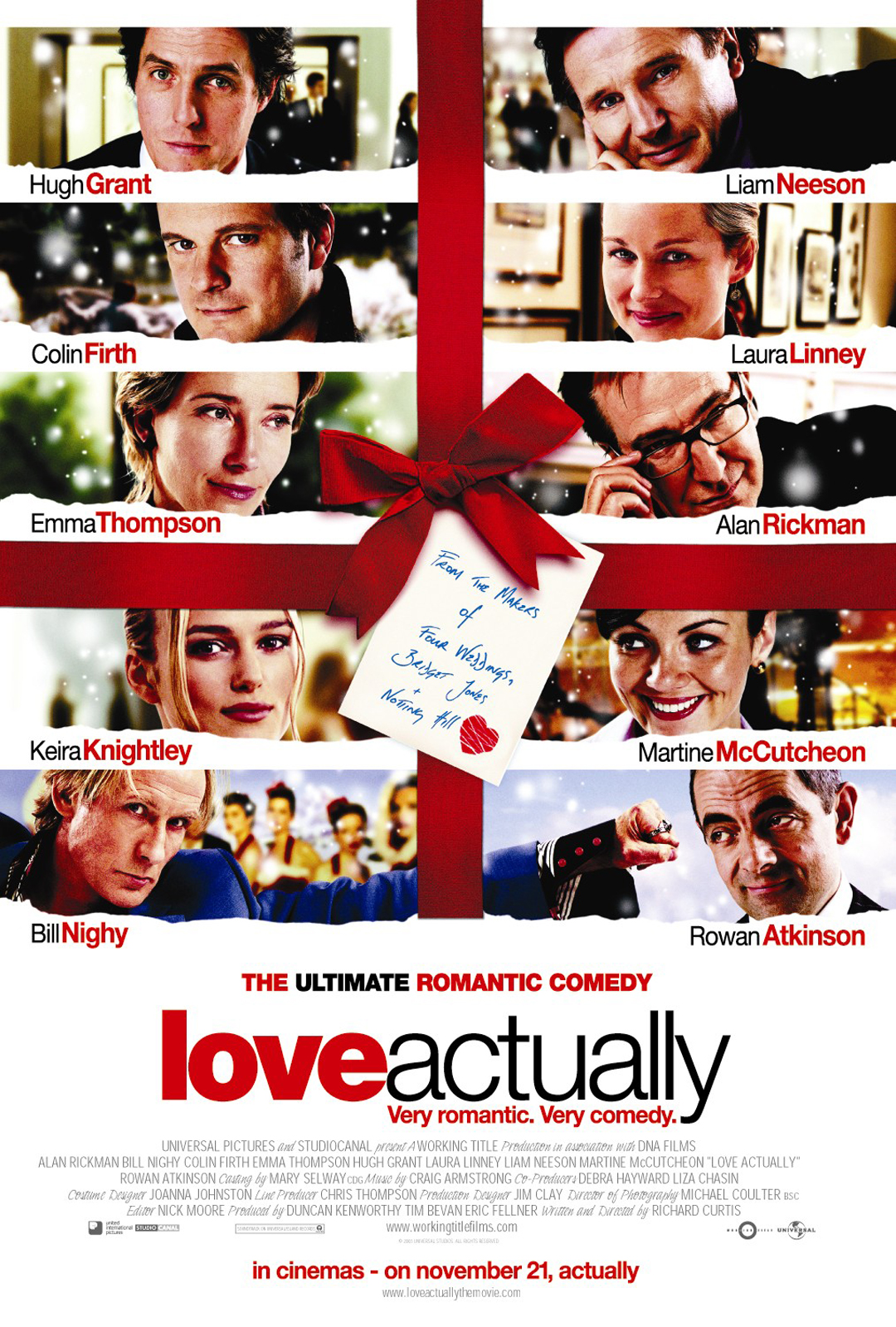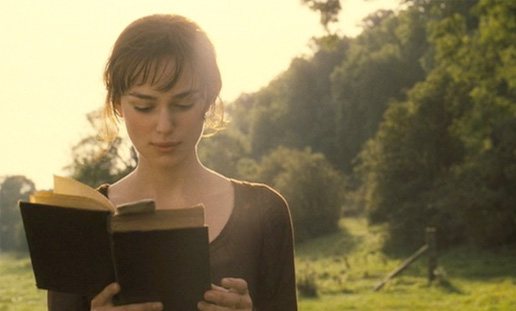Director= Sharon Maguire
Writers= Helen Fielding
Release date= 2001
Runtime=97 minutes
Budget= $26 000 000
Genre Conventions
The genre of this film is Romantic Comedy (Rom-Com) This genre combines both romance and comedy. The target audience for this genre is primarily teenage girls to older women.
Cinematography
The film opens with the film's idents, for example universal and working title.
There is then a long shot. This establishes the surrounding and the season. From this shot we know that the character is in the countryside, during winter. As the character talks about being single, a couple, together can be seen in the background. This juxtaposes the loneliness of the character that we see.
In a scene, during the party, there is a medium shot of the main character, who we now know is called Bridget, kissing her Dad. This is a very gentle and sincere scene which contrast with the awkward, embarrassing kiss with her uncle.
Later on, there is a shot from the top of the stairs which makes the audience feel very involved in the scene. The shot is also slightly slanted which could be reflecting the quirky character of the Bridget's mum.
There is also an extreme close-up of Bridget removing her eye make up. This represents her taking off the past, and a new start. This close-up shows her intimate feelings.
Editing
When changing from the countryside back to Bridget's flat in London, there is a dissolve. This emphasizes the darkness of London and her misery.
There is a lot of continuity editing when characters are talking to each other and this creates a smooth transition. There are lots of shot-reverse-shots which also creates continuity between characters.
There are also a lot of fades and dissolves.
There is a use of slow-motion when one of the characters, called Mark, turns around when Bridget first meets him. This emphasizes the theme of love and also creates this idea of her meeting 'Mr.Right'
At one point, there is a freeze frame. This is when she reaches her 'epitome' of sadness. It represents a turning point in her life. This is the point where she decides to change
Sound
At working title, non-diegetic music begins which sounds almost christmassy due to there being light bells in it.
Also, right at the start, Bridget talks about it being her 32nd year of being single, this shows that the genre of the movie is romance, this sentence has connotations of a typical rom com and shows that this movie will be consistent in its genre, so there will be no surprises eg.very typical, girl falls in love etc.
Near the end, Bridget is sitting in her room, lip syncing to non-diegetic music of "all by myself" by Whitney Houston. This scene is a medium shot and this doesn't change much throughout the song. This allows the focus to be on the character herself and the misery that she feels.
Cinematography
The film opens with the film's idents, for example universal and working title.
There is then a long shot. This establishes the surrounding and the season. From this shot we know that the character is in the countryside, during winter. As the character talks about being single, a couple, together can be seen in the background. This juxtaposes the loneliness of the character that we see.
In a scene, during the party, there is a medium shot of the main character, who we now know is called Bridget, kissing her Dad. This is a very gentle and sincere scene which contrast with the awkward, embarrassing kiss with her uncle.
Later on, there is a shot from the top of the stairs which makes the audience feel very involved in the scene. The shot is also slightly slanted which could be reflecting the quirky character of the Bridget's mum.
There is also an extreme close-up of Bridget removing her eye make up. This represents her taking off the past, and a new start. This close-up shows her intimate feelings.
Editing
When changing from the countryside back to Bridget's flat in London, there is a dissolve. This emphasizes the darkness of London and her misery.
There is a lot of continuity editing when characters are talking to each other and this creates a smooth transition. There are lots of shot-reverse-shots which also creates continuity between characters.
There are also a lot of fades and dissolves.
There is a use of slow-motion when one of the characters, called Mark, turns around when Bridget first meets him. This emphasizes the theme of love and also creates this idea of her meeting 'Mr.Right'
At one point, there is a freeze frame. This is when she reaches her 'epitome' of sadness. It represents a turning point in her life. This is the point where she decides to change
Sound
At working title, non-diegetic music begins which sounds almost christmassy due to there being light bells in it.
Also, right at the start, Bridget talks about it being her 32nd year of being single, this shows that the genre of the movie is romance, this sentence has connotations of a typical rom com and shows that this movie will be consistent in its genre, so there will be no surprises eg.very typical, girl falls in love etc.
Near the end, Bridget is sitting in her room, lip syncing to non-diegetic music of "all by myself" by Whitney Houston. This scene is a medium shot and this doesn't change much throughout the song. This allows the focus to be on the character herself and the misery that she feels.



























